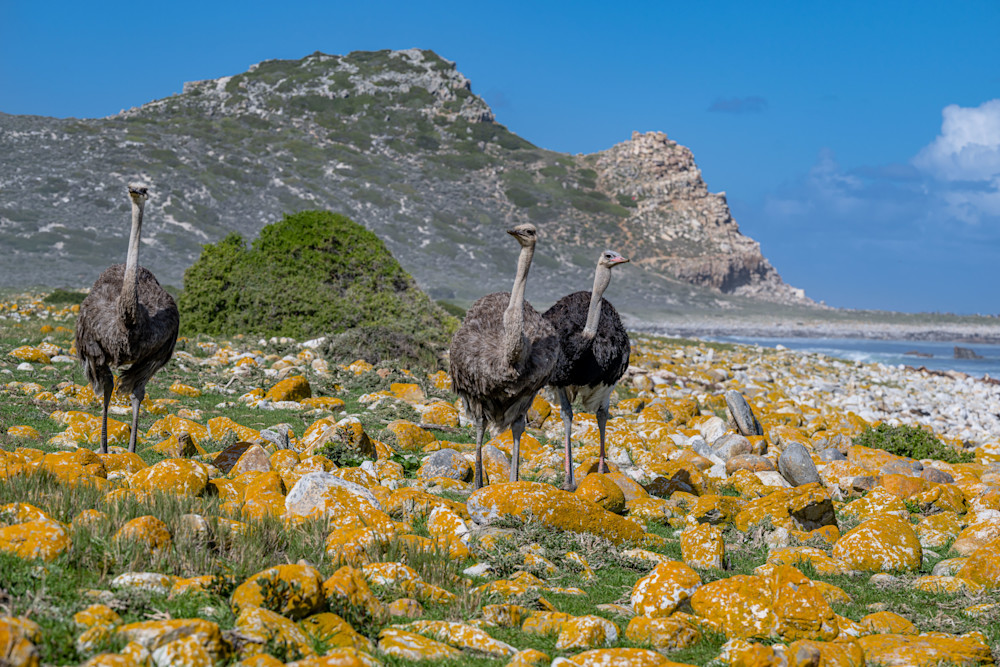On the rugged and windswept shoreline of the Cape of Good Hope, a solitary ostrich navigates the rocky terrain with a unique juxtaposition of elegance and hardiness. Here's a vivid description of an ostrich along the rocky shoreline:
As the restless waves of the Atlantic Ocean crash against the ancient rocks, the Cape of Good Hope unveils a dramatic seascape. Against this tumultuous backdrop, a lone ostrich strides purposefully along the rocky shoreline. Its powerful legs, adapted for the arid plains, now navigate the uneven terrain with an unexpected grace.
The ostrich's plumage, a mosaic of earthy browns and whites, ripples in the sea breeze. Its large, expressive eyes survey the surroundings with an air of curiosity, framed by a long neck that seems to defy the harsh elements. The feathers, tousled by the coastal wind, lend a touch of wildness to the otherwise sleek and aerodynamic form.
The rocky shore, adorned with weathered boulders and smoothed pebbles, becomes a challenging stage for the ostrich's passage. Yet, with each measured step, the bird demonstrates an innate ability to adapt to the harsh coastal environment. The echoes of its steady footfalls blend with the symphony of crashing waves and seabird calls, creating a melodic fusion of coastal sounds.
Against the distant horizon, the iconic silhouette of the Cape of Good Hope stretches into the azure sky. The ostrich, a solitary figure against the vastness of the seascape, embodies the resilient spirit of survival—a testament to life's tenacity in the face of nature's forces.
As the ostrich moves along the rocky shore, it becomes a living emblem of the Cape's untamed allure, where the terrestrial and marine worlds converge in a dance of contrasts. The juxtaposition of the sturdy ostrich against the rugged coastline paints a vivid picture of the harmonious yet challenging coexistence between land and sea in this remote and breathtaking corner of the world.
















